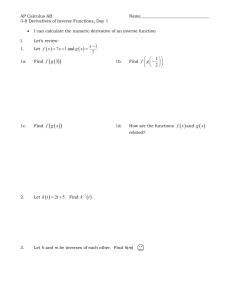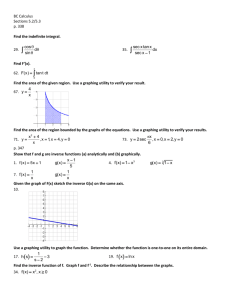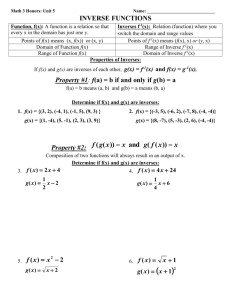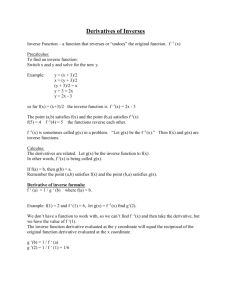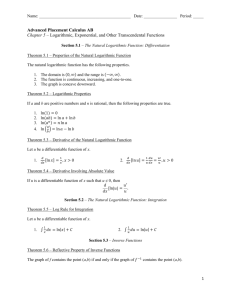Calculus Notes for 5.3 Assignment: p. 343 3,7,9
advertisement
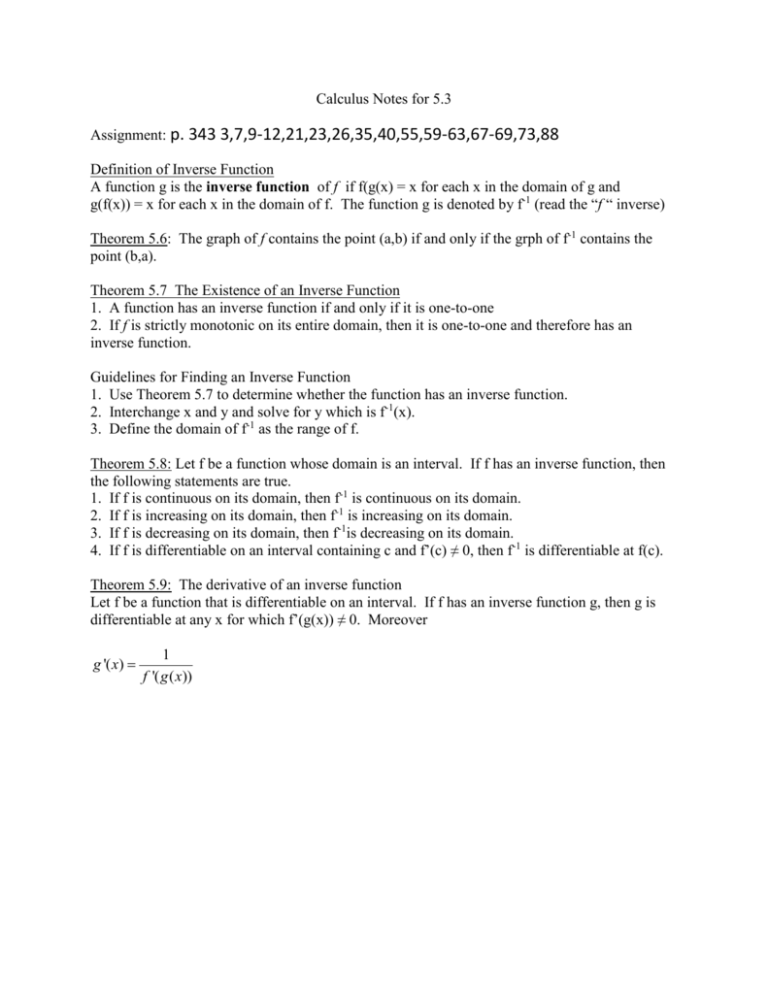
Calculus Notes for 5.3 Assignment: p. 343 3,7,9-12,21,23,26,35,40,55,59-63,67-69,73,88 Definition of Inverse Function A function g is the inverse function of f if f(g(x) = x for each x in the domain of g and g(f(x)) = x for each x in the domain of f. The function g is denoted by f-1 (read the “f “ inverse) Theorem 5.6: The graph of f contains the point (a,b) if and only if the grph of f-1 contains the point (b,a). Theorem 5.7 The Existence of an Inverse Function 1. A function has an inverse function if and only if it is one-to-one 2. If f is strictly monotonic on its entire domain, then it is one-to-one and therefore has an inverse function. Guidelines for Finding an Inverse Function 1. Use Theorem 5.7 to determine whether the function has an inverse function. 2. Interchange x and y and solve for y which is f-1(x). 3. Define the domain of f-1 as the range of f. Theorem 5.8: Let f be a function whose domain is an interval. If f has an inverse function, then the following statements are true. 1. If f is continuous on its domain, then f-1 is continuous on its domain. 2. If f is increasing on its domain, then f-1 is increasing on its domain. 3. If f is decreasing on its domain, then f-1is decreasing on its domain. 4. If f is differentiable on an interval containing c and f’(c) ≠ 0, then f-1 is differentiable at f(c). Theorem 5.9: The derivative of an inverse function Let f be a function that is differentiable on an interval. If f has an inverse function g, then g is differentiable at any x for which f’(g(x)) ≠ 0. Moreover g '( x) 1 f '( g ( x))
